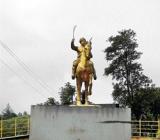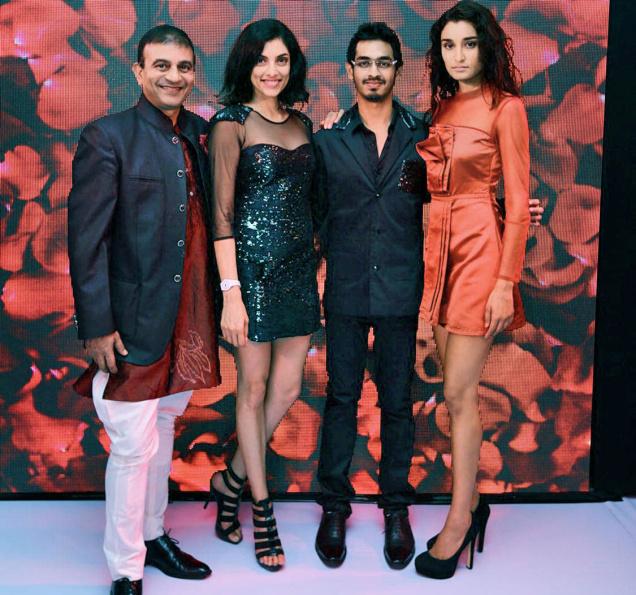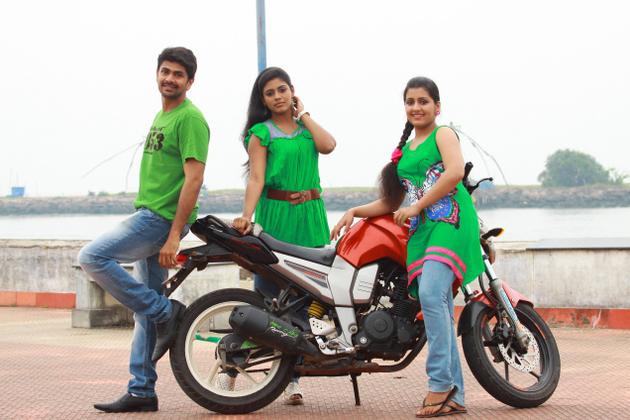 The Kodavas put up a brave fight against the British in 1837, three years after the latter invaded Kodagu. Mookonda Kushalappa narrates the story of the resistance.
The Kodavas put up a brave fight against the British in 1837, three years after the latter invaded Kodagu. Mookonda Kushalappa narrates the story of the resistance.
In 1834, the British East India Company had resolved to invade Kodagu and annex it. The Company sent in an army of 6,000 sepoys, divided into four columns, into Kodagu — one column was to enter from the east, one to enter from the north and two to enter from the west. They were to march into the capital Madikeri. The northern column marched towards Harangi (now famous for the dam) to meet the eastern column. A village in the woods at the base of a mountain pass lay in their path.
This village was the chief base of the resistance in Kodagu led by an official called Mathanda Appachu. He had secured the village with thick wooden palisades. Behind the wooden palisades through the arrow-slits of the palisades, the Kodavas aimed their guns at the British and shot at them. The column couldn’t hurt them. It was a fierce battle which raged on for four-and-a-half hours. Col. Mills tried to attack the village from the flank. But he was shot dead in the process. Forty eight soldiers, including three officers, were shot dead and 118 were left wounded on the East India Company’s side. There were no known casualties on the side of the natives. The East India Company was forced to retreat and take a different route.
The western column also met with some resistance. Its men marched towards Virajpet but came across several palisades. After some persistence, the palisades fell to the column’s attack one by one and the men marched on. But the column counted a dozen dead, including a lieutenant, and 36 wounded by the time they made their way through. Elsewhere as well, the Kodavas provided some resistance but were eventually forced to retreat. The eastern column which arrived through Kushalnagar brought in howitzers. Six Kodavas were killed on the banks of the Cauvery. The remaining retreated and the Company troops proceeded. The war ended when the last Raja of Kodagu sent his dewans to surrender to the east column and escort them into Madikeri. Within three days, the Raja emerged from hiding in his private palace at Nalknad, also known as Nalnad, and surrendered.
Amara Sulya
In the 18th century, Amara Sulya was given to the Raja of Kodagu by the Raja of Nagara. The Raja of Kodagu had aided the Nagara Raja in collecting tribute from another raja. As a symbol of their friendship, the Nagara Raja gave Amara Sulya to the Kodagu Raja. From this region, a regular supply of coconuts would arrive at the temple of the river goddess Cauvery. Immediately after Kodagu came under the East India Company in 1834, Amara Sulya was separated from it and made part of South Canara (now Dakshina Kannada) district of the then Madras province.
Cause for the insurgence
Under the Kodagu Rajas, the people of Sulya paid their revenues in kind. But now they came under the District Collector of Mangalore, who demanded that they pay their taxes in money. They were now placed under the mercy of those who gave them money in exchange for their produce. For three years, they paid their revenue in money but in 1837, they were unable to pay the money. The agriculturists expressed their inability to pay the revenue. Instead they had their agricultural produce which they could give.
The District Collector of Mangalore and his shrestidhar (clerk) arrived at Puttur in March. They were accompanied by a troop of over 150 soldiers and three officers. The Collector and his shresthidar tried to intimidate the people by warning them that only money would be accepted. They had nothing to do with agricultural produce. If the taxes weren’t paid on time then their cattle and lands would be confiscated.
Meanwhile two monks, Aparampara and Kalyanaswamy, claimed the thrones of Kodagu and Nagara respectively. They took advantage of the agriculturists’ grievances against the Company to start the insurgence.
On March 29, 1837, Atlur Rammappayya, a local officer, was killed by unknown people. This is seen as the start of the insurgence.
Capture of Mangalore
People were enraged with the Collector and gathered at a jungle clearing in Puttur. Some 500 of them go together, and took up sticks, oidekattis (Kodava war knives) and guns. That day the Bellare treasury was ransacked. The mob chased the Collector and his men who were resting at the travellers’ bungalow.
On seeing the irate mob, the Collector and his men left for Mangalore in the middle of the night. It was March 30, 1837.
Along the way government offices were attacked and treasuries captured. On April 2, the insurgents reached Bantwal. Here three local chieftains, Lakshmappa Banga of Nandavar, Manjappa Hegde of Dharmasthala and Chandrashekhara Chowta of Mudabidri, joined them with their men and resources.
Fifty-nine soldiers among the Collector’s men were killed in those few days. The Collector and his surviving men arrived at Mangalore on April 3. On April 4, the European military and civilians stationed at Mangalore resolved to leave the town’s port by boats to Cannanore (Kannur) port in Malabar (Kerala). As there were few boats, the women and the children were sent away first, while some of the men, especially the soldiers stayed back. The Judge of Mangalore and his assistant led the fleeing people to a ship called the Eamont.
The Eamont set sail towards Cannanore on April 5. The ammunition depot in Mangalore caught fire and blew up. That day in the afternoon Mangalore was occupied by the mob. The prisoners in Mangalore jail were released. The flag of the natives was flown at Mangalore.
When Eamont reached Cannanore, its passengers informed the authorities about the situation in Mangalore.
Troops were sent from Cannanore to Mangalore. They arrived in the evening of April 6 to reinforce the European garrison. On April 7, the native mob returned but were driven out and killed in large numbers. More European troops arrived in from Cannanore, Mumbai, Bangalore and Madikeri.
By April 16, the British had taken control of Mangalore. Troops were stationed at the place who remained there until December 12, 1837.
Leading lights
In Kodagu, the insurgence had three leaders: Guddera Appaiah (or Guddemane Appaiah/Appayya) of Kodagu Balamuri, Mandira Uthaiah of Nalnad and Mallaiah of Shantali. On April 14, proclamation letters seeking support for the movement had reached several parts of Kodagu. Plans were made to capture Madikeri fort. The Kodavas of Nalnad and Tavunad immediately rose and followed Subedar Guddera Appaiah and Subedar Mandira Uthaiah. Kodavas from Beppunad and other parts were unsure about what needed to be done so they consulted the dewans at Madikeri. One of the three dewans, Laxminarayana supported the revolutionaries. Laxminarayana was captured by the British and imprisoned.
Superintendent LeHardy was the British officer in charge of Kodagu. He instructed the two remaining dewans, Bopu and Ponnappa, to support him. LeHardy accompanied Bopu’s men to scout the parts of Kodagu towards Sulya. However they didn’t find any of the revolutionaries there. Only then that LeHardy came to know of the involvement of Uthu (Mandira Uthayya), Subedar of Nalnad. Some of dewan Bopu’s own relatives and friends supported the movements cause. LeHardy suspected Bopu, an old man, and charged him of treason because it was his sources who had misinformed them. Bopu wept before him and pleaded innocence. The native police was then mobilised to suppress the revolt.
Then Bopu and his police force went towards Sulya. The men had armed themselves with sticks and two of them proceeded before Bopu because Chetty-Kudiya, a revolutionary, had promised to shoot down Bopu on seeing him. They went a little beyond Madikeri when they met Muddayya and Appayya, one a former Subedar and the other a former Parpatyagara. They were two of Bopu’s friends who secretly supported the insurgence. They had been responsible for misinforming Bopu and thus embarrassing him before LeHardy.
The dewan’s men beat them up and left them for half dead. Further on the march, the force met insurgent Kodavas from Nalnad. They were beaten up severely and their leader Subedar Mandira Uthayya, who was among them, was made to surrender.
A regiment of Europeans and natives arrived under Col. Williamson to Madikeri. On April 16, the people of Yedavanad in Kodagu had planned to take over Madikeri as instructed by the proclamations. But LeHardy and Williamson had their troops stationed at Madikeri and they sent men towards Yedavanad to eventually thwart these plans. The Yedavanad people who were involved in the insurgence were made to surrender.
The battle at Sulya
Bopu marched into Sulya with his native policemen. There were skirmishes between his men and the revolutionaries. Dr. Palmer, an assistant surgeon, and his family had been made captives by the revolutionaries for 18 days.
When the revolutionaries were fleeing, Bopu caught up with them near Udoor and got Palmer and his family released. Later Bopu got Devappa of Mangalore, a minor government official who was held prisoner by the insurgents at Puttur, released as well.
While Bopu was already in Sulya, a Company officer, Col. Green, led his troops into the region. The revolutionaries were cornered and this culminated into the battle of Katkai Sulya. Subedar Guddera Appayya was captured and the treasury was recovered. Col. Willamson then entered Sulya from Madikeri. By April 26, the revolt had ended in Kodagu and Sulya.
source: http://www.DeccanHerald.com / Home> Supplements> Spectrum / March 05th, 2013








